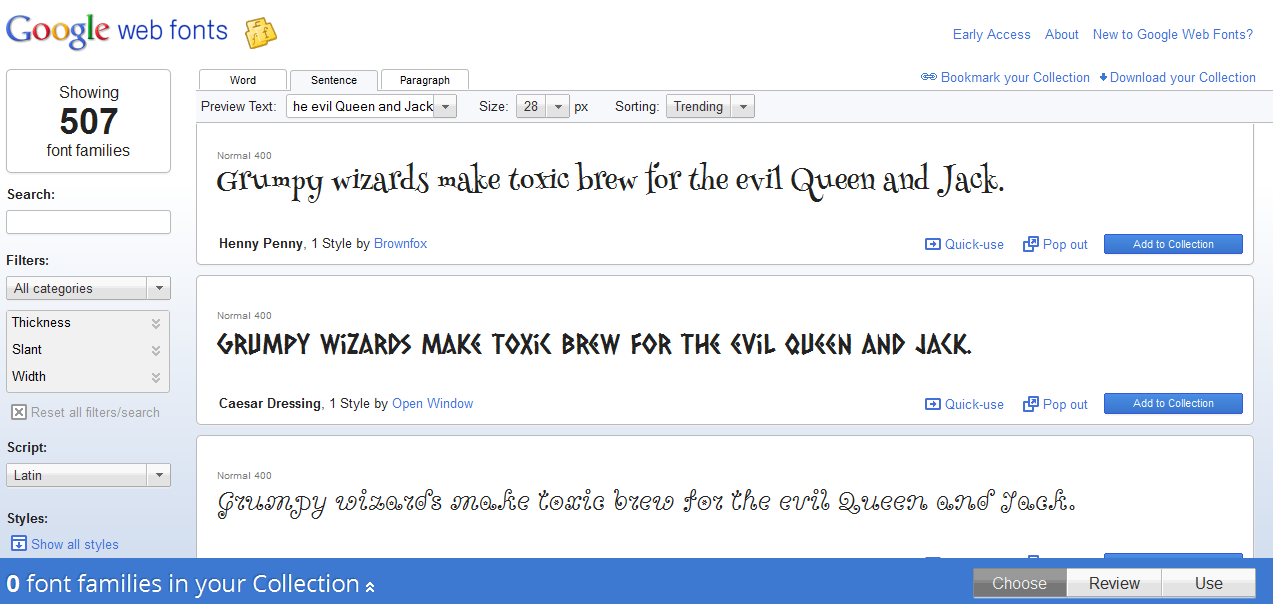

During this period, if the font face is not loaded, any element attempting to use it must instead render with an invisible fallback font face. The first period is the font block period.
WEBFONT WIZARD DOWNLOAD
Similar to the existing font timeout behaviors that some browsers implement, font-display segments the lifetime of a font download into three major periods: However, you can tell modern browsers how you want them to behave by using font-display. In the post Avoid invisible text during font loading you can see that default browser behavior is not consistent. You still need to consider how browsers behave when rendering text that uses a font-family which is not yet available. While preloading makes it more likely that a WebFont will be available when a page's content is rendered, it offers no guarantees. Using will trigger a request for the WebFont early in the critical rendering path, without having to wait for the CSSOM to be created. If there's a high probability that your page will need a specific WebFont hosted at a URL you know in advance, you can take advantage of resource prioritization. The "race" between the first paint of page content, which can be done shortly after the render tree is built, and the request for the font resource is what creates the "blank text problem" where the browser might render page layout but omits any text.īy preloading WebFonts and using font-display to control how browsers behave with unavailable fonts, you can prevent blank pages and layout shifts due to font loading. After the font is available, the browser paints the text pixels.


As a result, font requests are delayed well after other critical resources, and the browser may be blocked from rendering text until the resource is fetched.

Lazy loading of fonts carries an important hidden implication that may delay text rendering: the browser must construct the render tree, which is dependent on the DOM and CSSOM trees, before it knows which font resources it needs in order to render the text. However, if you're not careful, it can also create a performance bottleneck in the critical rendering path and delay text rendering. Given these declarations, the browser figures out the required subsets and variants and downloads the minimal set required to render the text, which is very convenient. For example unicode subsets, and distinct style variants. To address the problem of large files containing all variants, the CSS rule is specifically designed to allow you to split the font family into a collection of resources.
WEBFONT WIZARD HOW TO
In this post you will find out how to optimize loading of WebFonts so visitors only download what they will use.
WEBFONT WIZARD PLUS
Automated testing for WebFont loading behavior with LighthouseĪ "full" WebFont that includes all stylistic variants, which you may not need, plus all the glyphs, which may go unused, can easily result in a multi-megabyte download.


 0 kommentar(er)
0 kommentar(er)
